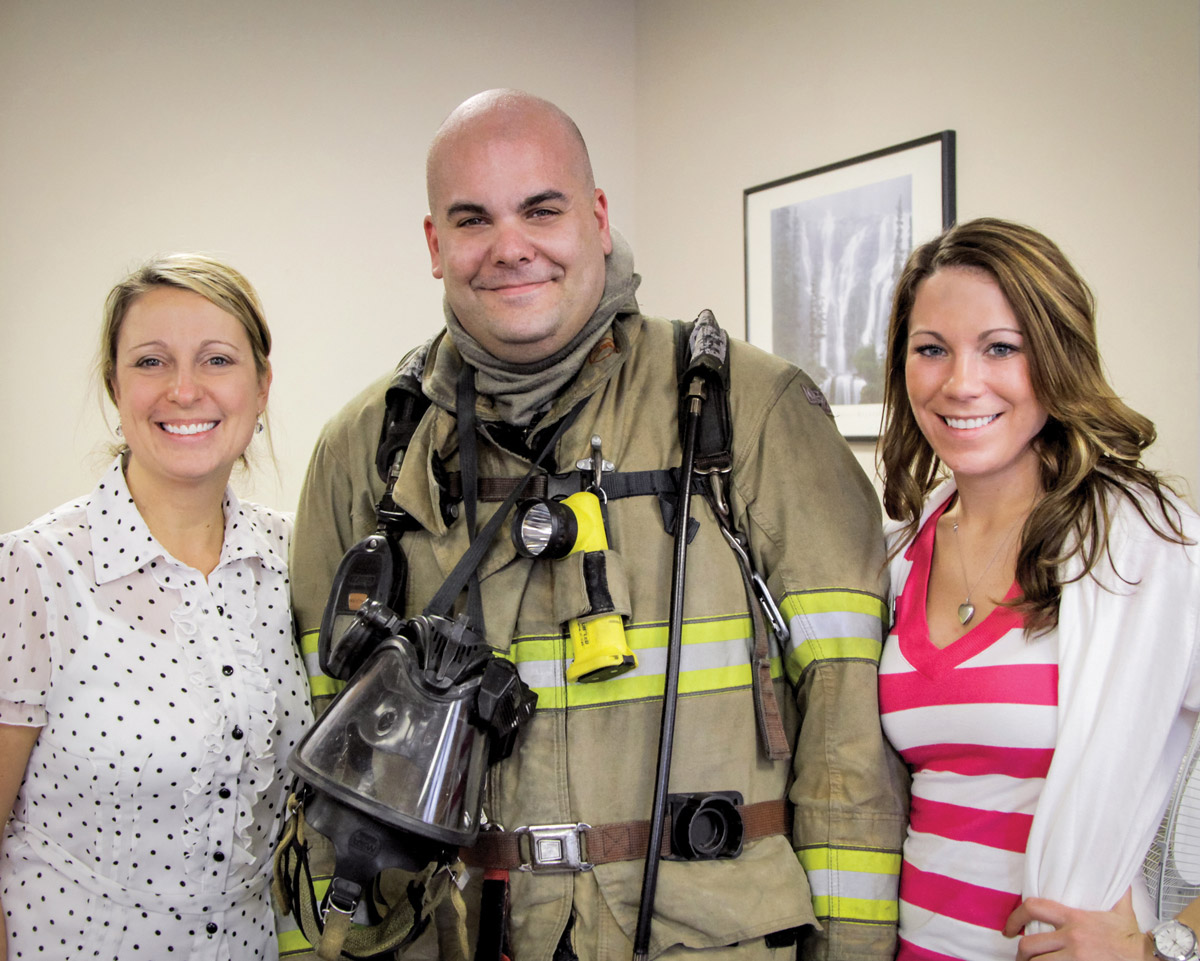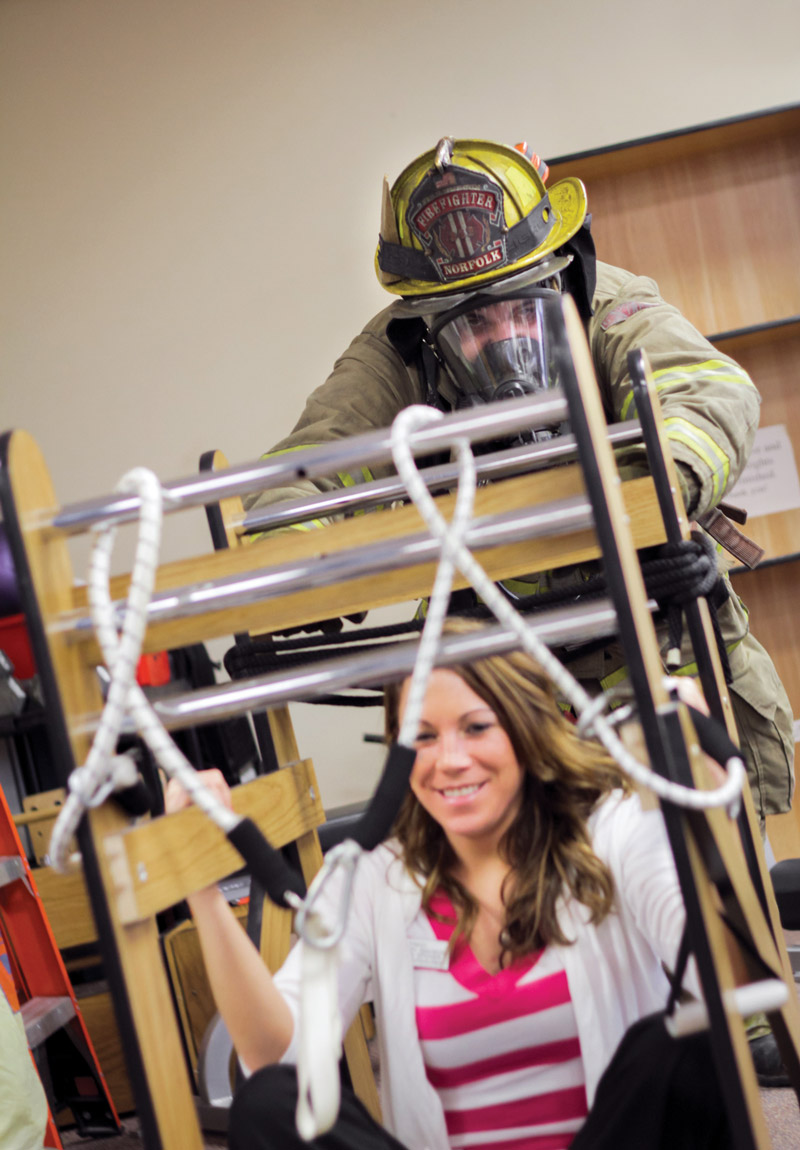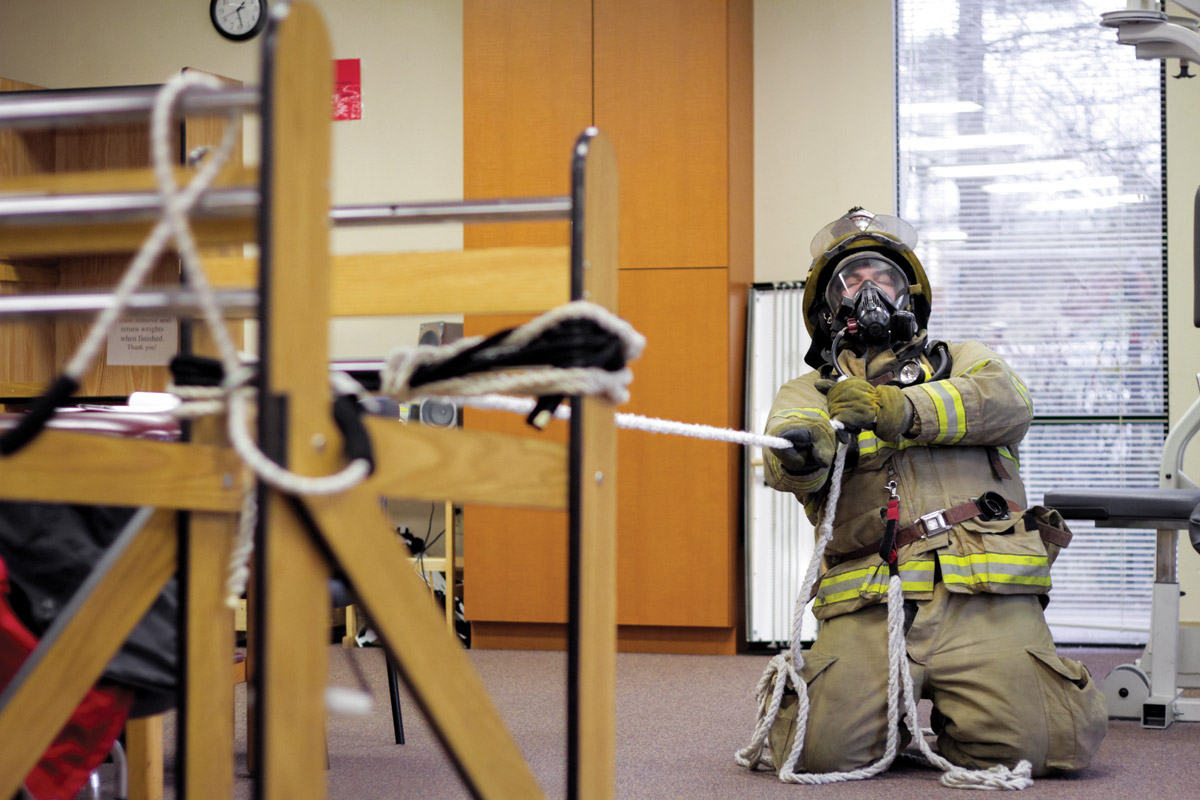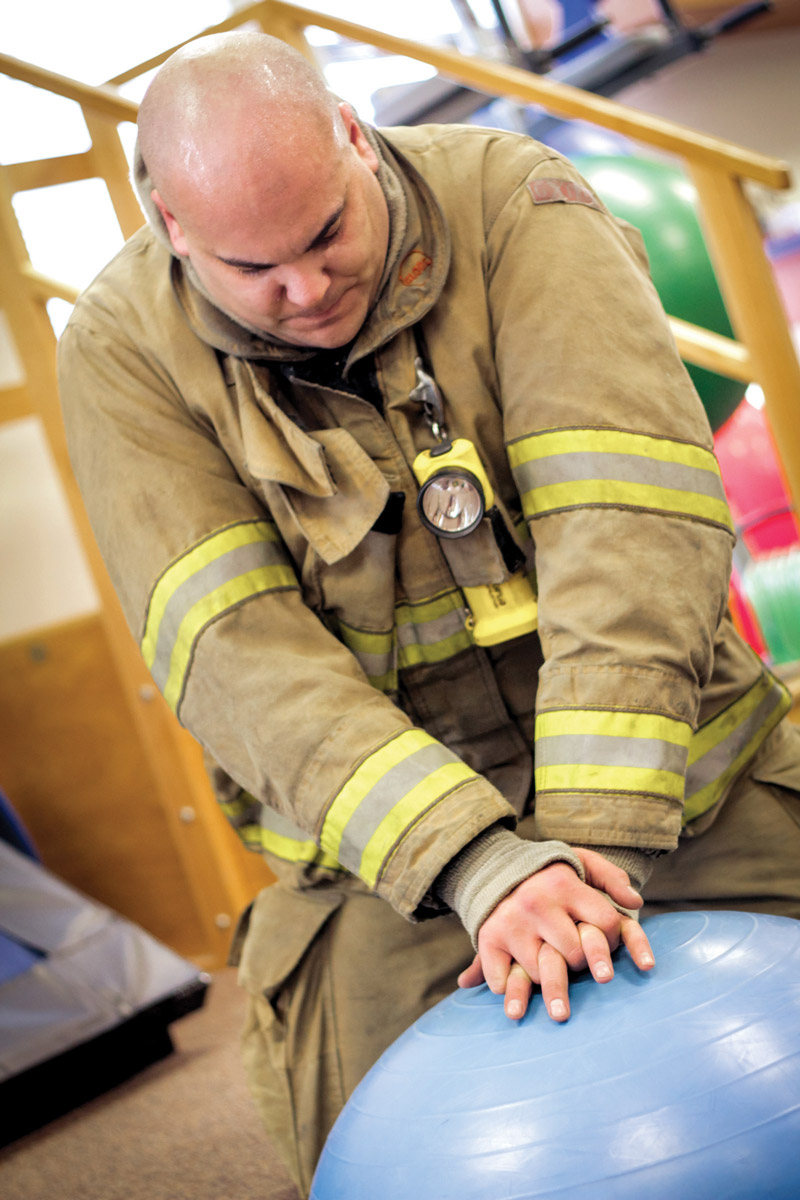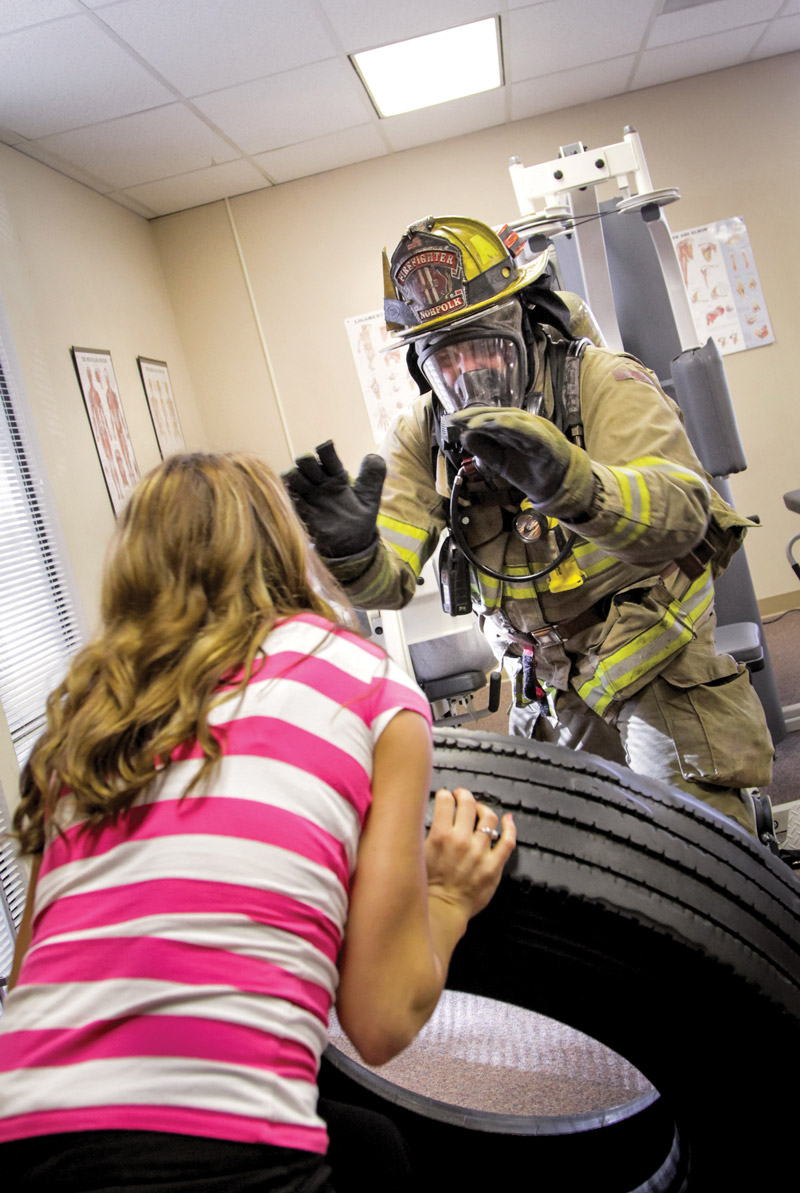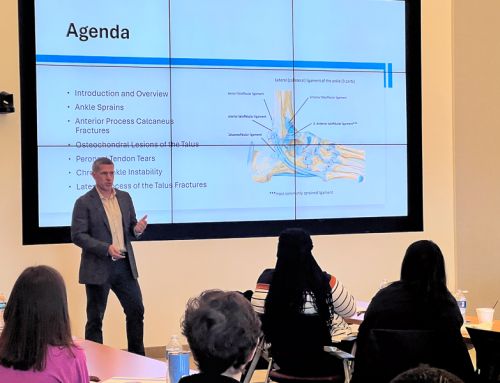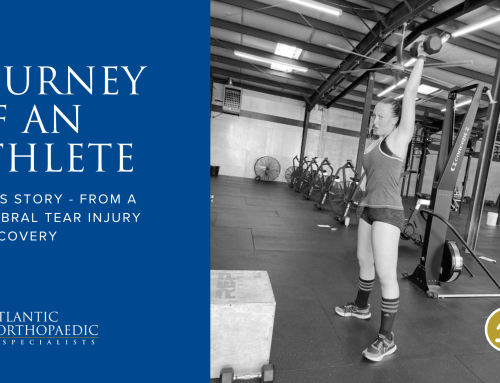Whatever It Takes: A Case Study of Jason Lovitz
Atlantic Orthopaedic Specialists Physical Therapy offers individualized rehabilitation programs at each of its four locations throughout South Hampton Roads. These programs include Hand Therapy, Sports Medicine, Spine Rehabilitation, Foot & Ankle, and Return-To-Work. Staffed by 14 Physical Therapists, 3 Physical Therapy Assistants, 6 Occupational/Hand Therapists, 2 Occupational Hand Therapy Assistants and 2 Functional Testers, the Physical Therapy team at AOS has what it takes to get you “Back In The Game”.
Jason Lovitz, an eight-year veteran of the Norfolk Fire & Rescue Service, originally hails from New England. There he was a volunteer firefighter in Northern Connecticut and Massachusetts for about four years in his late teens and early twenties. After an early career as a financial planner, he decided to leave the field and return to his true passion discovered from his days as a young volunteer – firefighting and rescue.
Lovitz moved to Hampton Roads from the Northeast specifically to pursue his career as a professional firefighter. “I’ve got the best job in the world,” he says.
Lovitz resides in the Ocean Lakes area of Virginia Beach, where he lives with his fiancé and their blended family of four children; two teens (age 13), and a nine- and four-year old.
In the spring of 2012, Lovitz injured his shoulder and his dominant right arm on the job. Although he addressed the injury’s symptoms, it was clear that more extensive treatment was required. After rotator cuff surgery by Dr. Sheldon Cohn in the fall, Jason began his rehab program at Atlantic Orthopaedic Specialists Physical Therapy.
“I had the surgery on Friday and was in here on the following Monday for PT.”
Admittedly unsure of what he might face from his first day of physical therapy at Atlantic Orthopaedic Specialists (AOS), Lovitz formed a strategy to approach his rehab based on what his fellow firefighters told him to expect. While bumps and bruises, pulls and strains are just part of the job as a professional firefighter, therapy is now more accepted and expected for the more severe injuries or work-related surgeries.
“A few of my co-workers had been through occupational therapy before, and they basically told me not to expect it to be easy and that I’d probably not like it,” Lovitz recalled. “But I was ready for it; how much of a challenge could it be? My approach was ‘whatever it takes’, because I wanted to get back out on the street.”
Lovitz wasn’t aware of a practice in rehab circles that uses a therapeutic approach which pays particular attention to the job description of the patient. This approach applies therapies that mimic functional activities verses a focus predominately on strength training or range of motion.
His AOS therapy team of Jodi Harrity, physical therapist; Lauren Spicher, exercise aide; and Janet Noe, physical therapist assistant, developed a program with a goal to help Lovitz to get his life back as it was before the incident—as if he was never injured.
The AOS team started with a functional baseline test using a computer software program to make a comprehensive assessment to measure force, lift, time, and manipulation. Strength and function are both important, but so is the work between the referring physician and the case manager, who consult about specific medication and test progress along the way.
“It’s important to build a connection between the physician, the case manager, the patient and the physical therapist,” Harrity said. “We’re really proud of our program.”
AOS recognizes that the mental aspect is equally important to the process, and engaging the patients helps their self-motivation. “The more input a patient can give on describing their daily job activities, the more successful the program can be for the patient,” said Harrity.
“Lifestyles change when you are injured,” said Harrity. “Everything changes when your body adapts to injuries. You sleep differently, shower differently, drive, etc.” AOS’ task was to find exercises where the healing is maintained, so as not to reinjure.
His co-workers were right, Lovitz thought as he pushed the makeshift sled across the carpet, just one of the custom designed exercises developed by his rehab team at AOS. At first, Lovitz found the therapy challenging. “But once I got here, I didn’t want to ‘dog it’ – I wanted to push myself because I wanted to get back to work.”
“Jason constantly wanted to push himself, to regain confidence and to return to doing everything in his job description,” said Lauren Spicher, exercise aide. “Engaged patients make a wealth of difference in the success of therapy. Really, they are key to the healing process.”
“Here, we can simulate much of what they do on the job,” Spicher explained. “It helps with psychological aspects of returning to work—regaining that confidence that they can do their job when they return to work.”
AOS relies on communication between the physicians, case manager, the physical therapist and others involved in the patient’s case. “Patients know it’s a very tough program to restore motion and strength,” Harrity said. “It’s not a rushed process, but one that is well thought-out.”
Lovitz’s physical therapy program lasted three months through the fall. In early December, Lovitz began his three-month work conditioning program at AOS preparing him for his “RTW” – or return to work evaluation.
“When I first started, I had no idea what to expect,” Lovitz said. “But I ended up being here three times a week for most of the time. So it’s been a seven month process from September to March.”
Now that his program has been successfully completed, and his three-times-a-week rehab sessions are in the past, Lovitz has been cleared by Dr. Cohn to return to full duty. “I was determined to do as much as I could just to get it done. To go there (to therapy), tough through it and be done with it—and back to the field where I wanted to be.”

